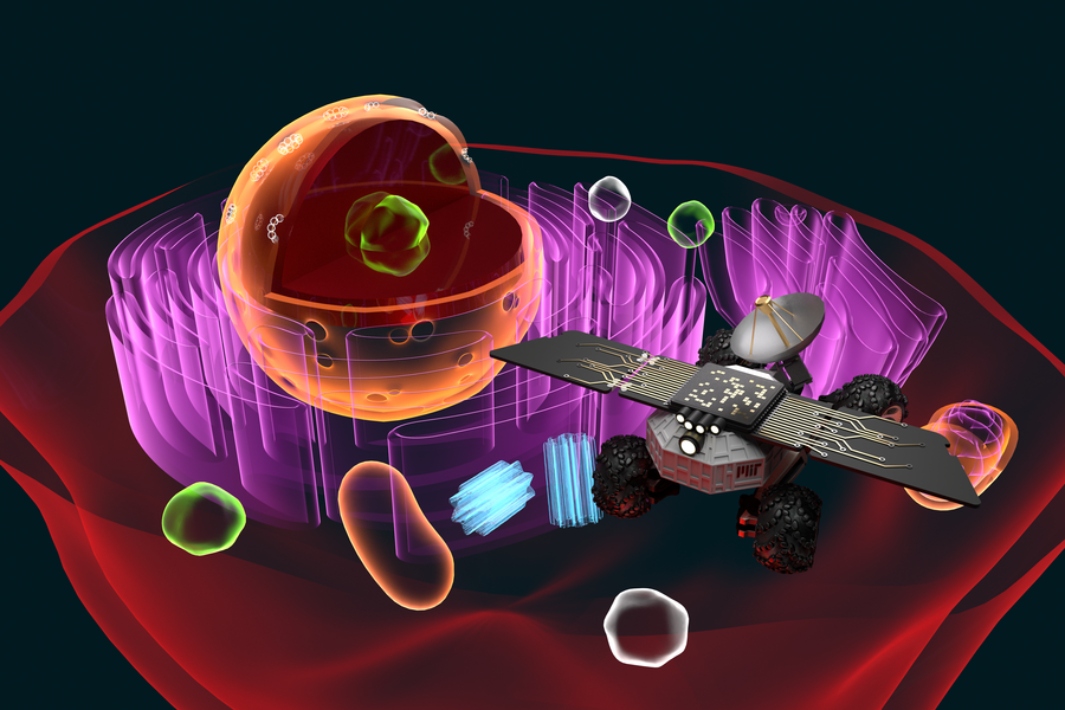
The Media Lab of the Massachusetts Institute of Technology (MIT) has developed a tiny antenna that can wirelessly operate inside a living cell, opening possibilities in medical diagnosis and treatment as well as other scientific procedures due to the antenna’s potential for real-time monitoring and even controlling cellular activity. The Cell Rover technology represents the first demonstration of an antenna that is compatible with 3D biological systems and can operate inside a cell.
Typical bioelectronic interfaces are millimetres or even centimetres in size and are not only highly invasive but also lack the resolution required to wirelessly interact with single cells. This is especially problematic given that changes to a single cell can have a profound effect on the entire organism.
The researchers have created an antenna that is much smaller than a cell. In fact, the antenna represented less than .05 per cent of the cell volume in the team’s research with oocyte cells, well below the size that would intrude on and damage the cell.
On the other hand, a significant challenge was figuring out how to build an antenna of that size that could work inside a cell. This is because conventional antennas must be the same size as the wavelength of the electromagnetic waves they transmit and receive. Such wavelengths are extremely long, and they represent the velocity of light divided by the frequency of the wave.
Simultaneously, increasing the frequency to reduce that ratio and the size of the antenna is counterproductive because high frequencies generate heat that is harmful to living tissue. The antenna developed by Media Lab researchers converts electromagnetic waves into acoustic waves, whose wavelengths are five orders of magnitude smaller than those of electromagnetic waves (representing the velocity of sound divided by the wave frequency).
This conversion from electromagnetic to acoustic waves is accomplished by fabricating miniature antennas out of magnetostrictive material. When a magnetic field is applied to the antenna, it is powered and activated.
Magnetic domains within the magnetostrictive material align to the field, causing strain in the material, like how metal bits woven into a piece of cloth might react to a strong magnet, causing the cloth to contort.
The variable strain and stress (pressure) produced in the material by the application of an alternating magnetic field to the antenna is what generates the acoustic waves in the transmitter. In this configuration, the antenna might be utilized to investigate the fundamentals of life as natural processes unfold. In lieu of destroying cells to analyse their cytoplasm, the Cell Rover may monitor the development or division of a cell in real-time and in vivo, detecting different chemicals and biomolecules, such as enzymes, or physical changes, such as changes in cell pressure.
With such capabilities, the Cell Rovers could be useful, for instance, in cancer and neurological disease studies. The technology might be used to detect and monitor biochemical and electrical alterations linked with the evolution of the disease in individual cells.
The method, when applied to the realm of drug development, might illuminate the reactions of living cells to various medications. With its small antenna, the Cell Rover may perform duties ranging from intracellular computation and information processing to autonomous cell exploration and modulation. Multiple Cell Rovers can communicate among themselves and with the outside world, even within a single cell, as shown by the research.
The researchers called their intracellular antenna device Cell Rover to evoke the exploration mission of a Mars rover.
















